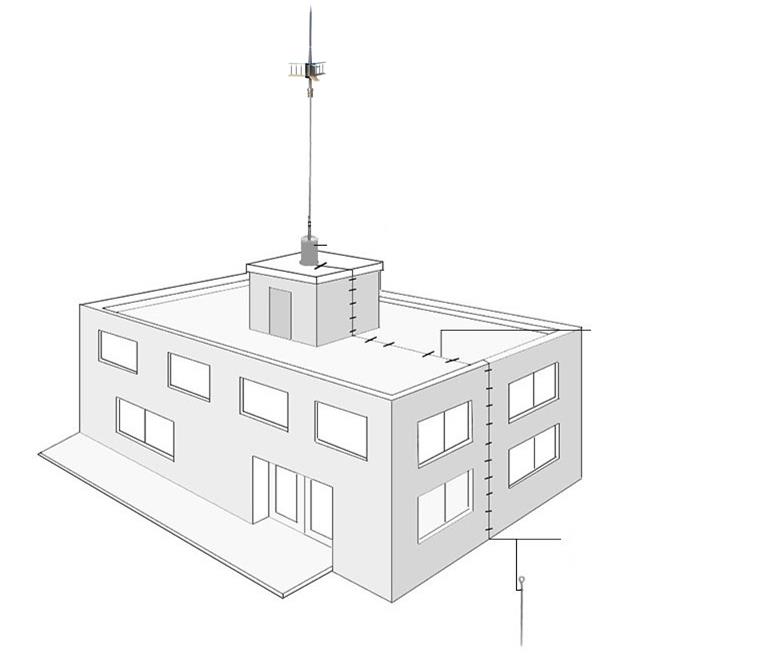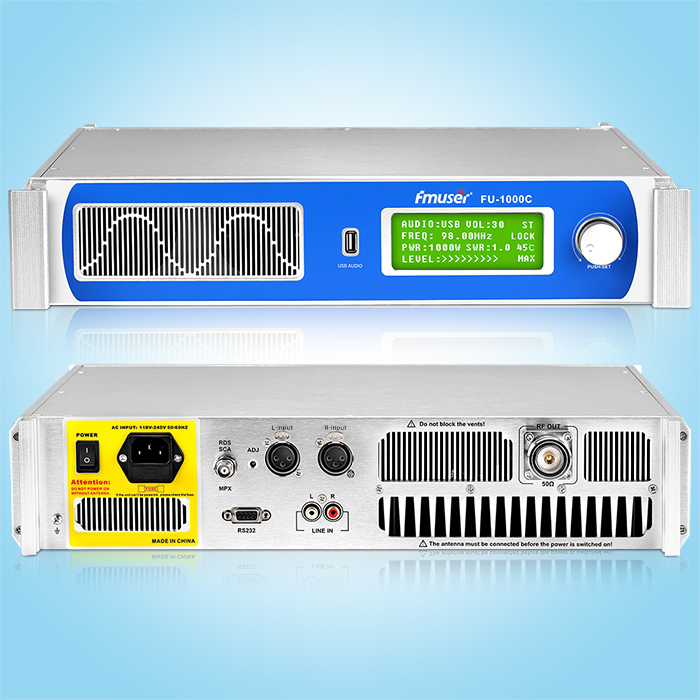ORBAN OPTIMOD-FM 5500i Digital Audio Processor
Optimod-FM 5500 puts the five-band and two-band Optimod processing in a separate rack unit package, and provides you with the best price, 5500 replaces the Optimod-FM5300 and 2300, provided in the new cooling run package The function of the two processors. High sound quality is the advantage of 5500 - no matter how the format and sound source materials can bring beautiful and professional sound quality. Excellent versatility allows you to mediate the audio texture of the processor to brand your voice, so that the resulting signature sound is always consistent on the clip and sound source. Branding can promote business development, and other processors cannot be comparable to it in the inhibitory of Optimod brand your voice. 5500 can also be used as an excellent independent stereocene decoder with a low reaching 2 ms delay, all overshoot restrictions on the left / right, and composite bands. When used in this mode, 5500 must be driven by a full-function FM audio processor (eg, an ORBAN 8600) that includes pre-sensing HF restrictions and peak controls (typically via STL). In both modes, the stereo encoder of 5500 helps to transmit clear and perfect limitations, regardless of the composite limit, all subcarriers spectrum protection and RDS / RBDS. 5500 is a broadcast company that uses ORBAN flagship Optimod-FM8600 and needs to have a processor at each transmitter to eliminate STL overshoot (using 5500 independent stereo encoder mode) and / or processing local insertion simultaneously. Also eliminates the ideal choice for broadcast companies that use the network STL overshoot (using 5500 audio processor / stereo encoder mode). In addition, two modes of 5500 can be used as a stereo encoder with or without audio processing, and the government agencies and network broadcasters are easier to manage their spare parts inventory. In both modes, the built-in canable ITU BS412 multi-channel transmission power controller, even the most stringent European government regulations, 5500 output can also be reached. A 10MHz frequency is added to the 5500, which allows the stereo conductive audio audio frequency to be locked to GPS or another high precision frequency standard. This increases the single frequency network performance of the transmitter overlapping area. There is also a new feature to cool the running energy-saving switching power supply and the latest dual-core DSP chip technology using Freescale Semiconductor. Using 5500, your signature sound is just a preset sound. Easy single spin buttons reduce / increase regulation allows you to customize any factory preset according to the market and competition environment, and conduct business cleaning for processing products. Fully control makes you more flexible and diverse to customize your sound. If you are a backbone expert, you can explore advanced controls like the programmer of the Orban factory to fine-tune the preset. This multi-function makes 5500 the optimal choice in any sound format. Its five-band processing is ideal for any pop music. Whether your choice is, 5500 optimization technology ensures significant increase in the average modulation and coverage for a given subjective quality level. Performance indicators (suitable for analog input to stereo mixed output and FM analog left and right outputs): Frequency response (by bypass mode): According to ± 0.10dB, 2.0Hz-15kHz standard 50μs or 75μs pre-arc-arc engagement, analog left and right output And the digital output can be configured as a flat or pre-loaded output. Noise: Output noise benchmark is based on the gain in the processor setting, the output noise base is based on the processor gain setting (restriction excitation, AGC excitation, dual band excitation, and / or multi-band), door circuit level, balance And the amount of noise is reduced, and the dynamic range control of the A / D drive of the A / D drive with a given 110db noise over-negative ratio, the dynamic range of digital signal processing is 144dB, the system is distortion (to increase, 100% modulation) : 1. 1881.0.01% THD, 20Hz-1kHz, 15 kHz rose to. 1881.0.05% < 0.02% SMPTEIM distortion. Separation of the system left and right: >50dB, 20Hz-15kHz; typical 60dB. Biased (dual frequency and bypass mode): Maintain absolute polarity. The input port the anode signal corresponds to the output port anode signal. Processing Sampling Frequency: 8300 is a multi-frequency system that requires from 32kHz to 512 kHz depending on the processing process. The operating frequency of the audio clipper is 256 kHz (anti-distortion). The composite limiter works at 512kHz. Treatment of scalp: Internal processing procedure 24bit (fixed point) or higher resolution; use Motorola DSP56362 DSP clipping. Analog audio input configuration: stereo impedance: >10K ohm load resistance, electric balance. Normal input level: can be adjusted from -4.0 to + 13.0 dbu (VU) via software. Maximum input level: + 27dbu. Connection method: Two XLR ports, negative, EMI control. Ping 1 is lowered, pin 2 (+), pin 3 electronic balance, floating and symmetrical. A / D inverting method: 24 bits 128X Double Sampling Delta Sigma line phase anti-loss filter. The inverter outputs 64kHz sampling frequency, 8300 is used with ultra-high quality image synchronous sampling frequency inverter to be reduced to 32kHz in the DSP. Filter: REI filter, with 0.15 Hz (-3dB) high-pass filter analog audio output configuration: stereo, unchanged or pre-weight (50μs or 75μs) can be selected by software. Original sound impedance: 50 ohms, electronic balance floating. Load impedance: 600 EU or higher. Balance or imbalance. No terminal. Output level (100% peak modulation): can be adjusted from -6dbu to + 24dBu peak, 600 ohms or higher loads, can be controlled by software. Signal to noise ratio: > = 90dB unloaded (bypass mode, degrading), 20Hz-15kHz bandwidth, reference 100% adjustment left and right string: < = 70dB, 20Hz-15kHz. Distortion: < = 0.01% THD (bypass mode, degrading), 20Hz-15kHz bandwidth. Connection method: two XLR ports, anodes, EMI inhibition, pin 1 adhesive, pin 2 (+), pin 3 electronic balance, floating or D / A frequency conversion mode: 24 bits 128X times super sample, use 64kHz output sampling frequency. Filter: RFI Filter Digital Audio Input Configuration: Stereo, 24-bit resolution, stereo software selection, from left channels to mono, right channel to mono or total channel . Sampling frequency: Automatically select 32, 44, 1, 48, 88, 2, or 96kHz.. Connection method: XLR type, anode, EMI inhibition. Ping 1 Adhesive Landline, Punch 2 and 3 Transformer Balance, Floating, 110 ohm impedance. Enter the reference level: variable range in -30 dBFS to -10dBFS. J.17 Dressing: Software Select Filter: RFI Filter Digital Audio Output Configuration: With the AES / EBU standard stereo, the software output is configured as constant or pre-reached the selected weight (50μs or75μs) or without J. 17 pre-load can be averaged. Sampling frequencies in the interior in 32, 44, 1, 48, 88, 1 or 96kHz freely running through software selection. Synchronization can be synchronized with the AES / EBU digital input at 32, 44, 1, 48, 88, 1 or 96kHz, or configured in the software. Word length: Software selection 24, 20, 18, 16 or 14 bits resolution. High-pass noise stibphosis can be increased, and the level can be automatically adjusted according to the word length. Connection method: XLR type, anode, EMI inhibition. Pinnam on the floor, pin 2, and 3 balance and floating transformers, 110 European and American impedances. Output level (100% peak modulation): - 20.0 to 0.0 dBFS, software control. Filter: RFI filtering. Safety standard: ETL standard under the UL certification system, CE standard size: 48.3 × 4.8 × 36.2cm weight: 8.7kg

















